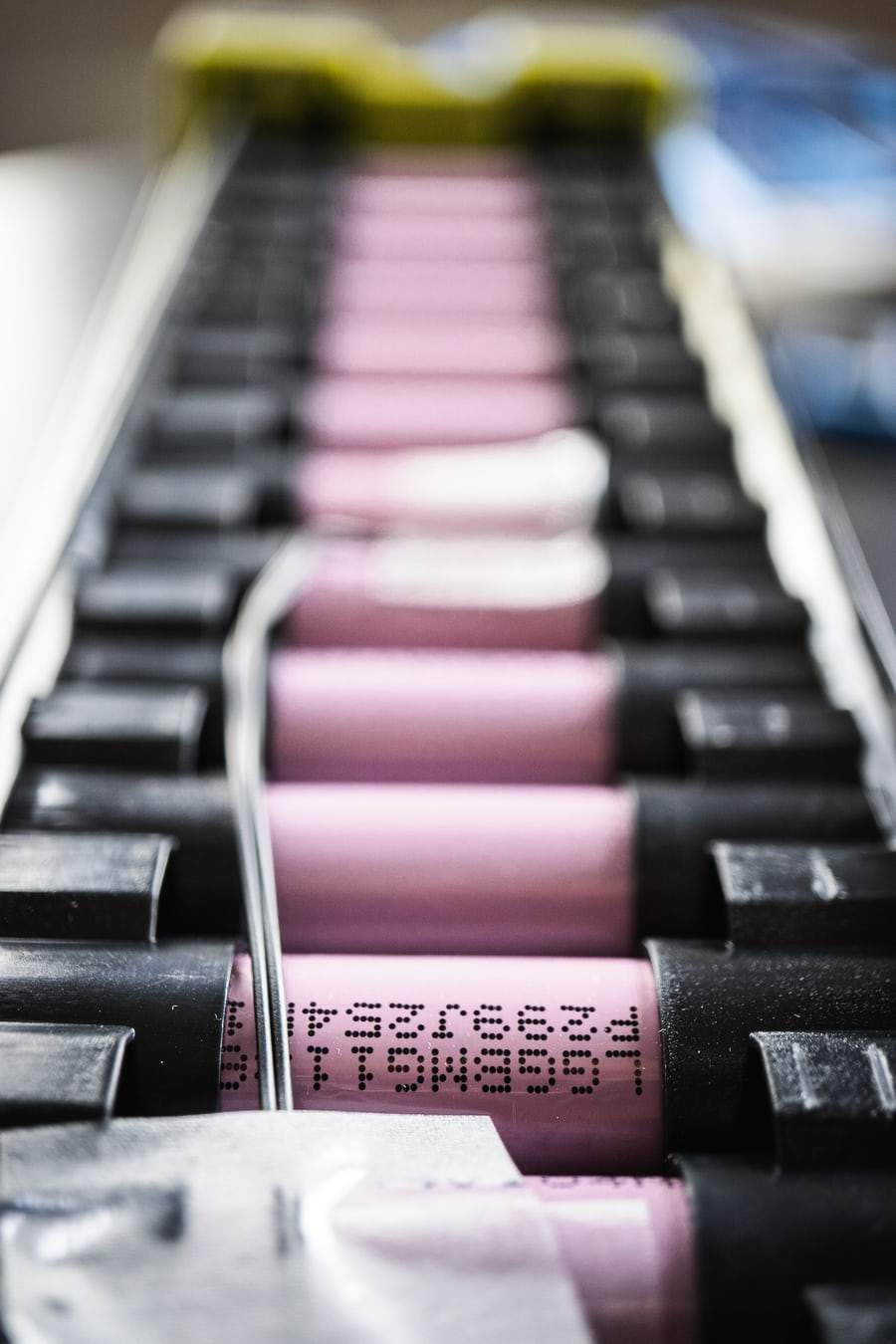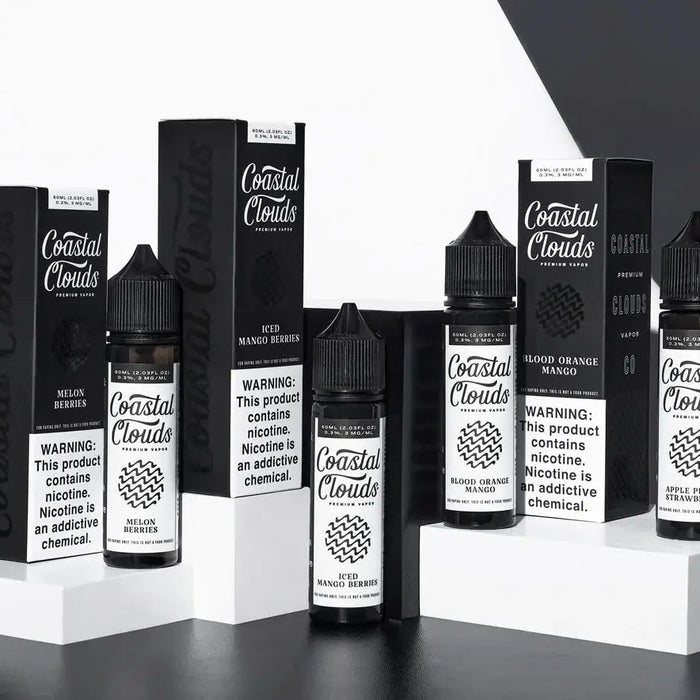Vape batteries have been the source of fear and confusion amongst users for quite some time. You may even remember some of the stories the media popularized: exploding vape batteries, the various injuries that ensued, and how vaping devices are dangerous. The actual truth is that these “dangerous vape batteries” are nearly the same exact type as what’s in your phone: a lithium ion battery. These battery types are also found in medical devices, laptops, tablets, and even gaming controllers. So what’s so different about having them in vape devices? The answer to that and more pertinent information on vape batteries is in the article. Let’s dive right into one of the most confusing parts of your device and check it out!
WHAT IS A VAPE BATTERY?
Lithium-ion batteries offer a wonderfully large amount of power while remaining relatively safe for use by the consumer. It’s how they’re used that presents a problem. While most lithium-ion batteries are tested rigorously to ensure they’re safe, vape batteries are slightly different. Your phone battery, as well as laptop and gaming controller batteries, are specifically designed to have very little contact with the user. You simply plug in the charger and forget about it until it’s charged. Vaping batteries are more user-dependent, meaning that the user must choose the type, brand, voltage, etc. of the lithium-ion battery to load into the vape device. If you’re new at vaping or purchasing vape equipment, this can seem a pretty daunting task that can become downright dangerous. Let’s take a look at the different types of batteries and sizes.
WHAT BATTERY TYPE SHOULD I USE?
We mentioned in our last article that you should never load any type of battery into your device without checking that it’s safe to do so. This includes rechargeable AA and AAA batteries, which are NOT intended for use with vape devices. The most common type of lithium-ion batteries for vape devices is the 18650 battery, but you can also choose from 10440s, 18500s, 18350s, 22500s, 22650s, and so forth. Those numbers actually mean something too. Each number gives information on the size of the lithium-ion cell.
- The battery diameter is listed by the first two numbers, usually an 18 or 22.
- The battery height is listed by the next two numbers: 35, 44, 50, 65, etc.
- The battery shape, either a cylinder or a non-cylinder.
Since an 18650 battery is the most common, those numbers mean that the battery’s diameter is 18, the battery’s height is 65, and the shape is a cylinder. Cool, right? These batteries are excellent for the correct voltage amount, as well as the correct high-current discharge rate.
VOLTAGE
Now that we know what these battery numbers mean, let’s go over what voltage means. You’ll see some batteries listed as having a 4.2 charge voltage, a 3.7 nominal voltage, and a 2-3V voltage discharge cut off. Unless you’re an electronics specialist, this might make your head spin with confusion. It’s pretty simple once you break it down a bit. The 4.2 means this is the max voltage the battery can hold. You should never attempt to charge beyond this point, but most external battery charges won’t go past that point anyway thanks to built-in protection.
Your battery works at its prime at 3.7 volts, also known as the nominal voltage. Once your battery life starts to drain, it gets close to the 3V cut off. Once it reaches this level, your device won’t fire anymore. You may notice that on your external battery charger, the battery level may read anywhere between 2-3 volts, showing that the battery level has been drained to a level where it must be recharged. The battery will not fire past that point. Any attempt to use the battery past the 3V charge point can make it dangerous to recharge, hence the voltage discharge cut-off.
AMPERAGE
The amperage (also called the battery’s current( is usually displayed as “Max 40A”, which shows how quickly the battery’s charge is flowing.
WATTAGE
The wattage is the combination of the voltage and the amperage. You can find your battery’s wattage by multiplying the voltage with the amperage. For example, if you have a 3.7V and a 40A battery, your max wattage on that battery is 148W.
AMPERE-HOURS
This is where it gets interesting. The battery I’m looking at has a 3000mAh. mAh stands for max amperage (per) hour, and can be calculated by the following equation: Ah (ampere hours) x 1000 = mAh. This means that the amount of amperage the battery can put out is 1000amps per hour for a total of 3 hours.
WATT-HOURS
This allows you to compare other batteries with different voltages. The watt hour is determined by multiplying the volts with the ampere hours, or volts x Ah = wH.
INTERNAL RESISTANCE
It’s important to note that batteries with a high internal resistance can undergo a drop in voltage while they’re being used. The higher the resistance, the harder the battery will work to power the charge. Internal resistance is also known as voltage sag.
WHERE CAN I BUY BATTERIES?
Now that you know how to read your batteries, the next logical question is, “Where can I buy good batteries?” There are several vape shops, both in-store and online, that sell vape batteries at great prices.
Always purchase your batteries from legitimate vape shops and trusted online vape shops. That way, if anything goes wrong (which it most likely won’t, but always be prepared), you can always trace your batteries back to the source for some sort of resolution.
WHAT BRAND OF BATTERIES SHOULD I BUY?
My preferred brand is the Imren 40A 300mAh 3.7v, which is a purple battery that I’ve never had issues with, aside from the purple vinyl starting to tear and peel. I have a two battery mod that these batteries work great with, but you may want to explore your options if you have a 3- or 4-battery mod. You can also check out the 18650 batteries sold by Sony, LG, Panasonic, or AW.
You should be aware that some companies like Efest, Aspire, and Orbitronic practic something known as rewrapping. They’ll take LG or Panasonic batteries, unwrap the company wrapper, and rewrap it with their own colored vinyl and stamp the company name on there. These three companies are known to exaggerate the specs of their batteries in hopes that more customers will buy them. We’ll go over which battery brands and specs are best in the next article, but there’s one more brand that you should steer clear of.
One of the worst battery brands to buy is TrustFire/UltraFire (or anything with the name Fire). Several reviewers have discovered that this company buys the cheapest batteries with the poorest specs and lowest quality and rebrands them to be a high-quality battery, just like LG and Panasonic. You should never buy this brand if you can help it, as the possibility of starting a fire in your mod is a real thing. Even if your vape shop pressures you into purchasing these batteries, hold off until you can do your research on this shoddy battery company.
CONCLUSION
There’s so much information on vape batteries that your eyes can start to glaze over and you’ll feel like you’re about to pass out from boredom. We’ve tried to break off a small chunk of vape battery information by simply telling you how to read the numbers on your battery. This should be immensely helpful in determining if you have good batteries or if you’re in the market for new batteries.
In our next article, we’ll break down more battery information such as battery safety ratings, battery chemistry, and more information on trusted brands. We’ve also got tons of new vape juice reviews to upload and DIY vape recipes to publish, so make sure you check back often to see what you’ve missed! Until then, we hope your batteries stay charged and are able to power you through the entire day for uninterrupted cloud chasing!




